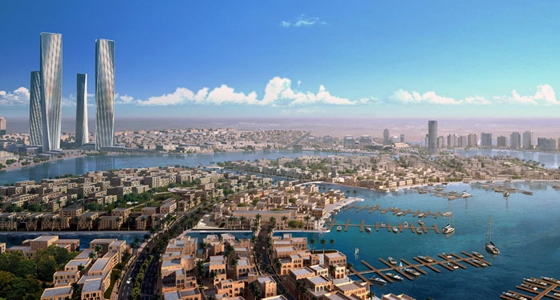With a wave of new projects moving from the drawing board to the roll-out stage in Qatar’s Lusail City development, activity in the construction sector looks set to shift up a gear.
Substantial spending on infrastructure, bolstered by a broad range of private sector initiatives, is expected to keep the industry working at full capacity in the coming years, though supply shortages and increasing input costs may arise as demand accelerates.
Lusail in the spotlight
Located to the north of Doha and covering an area of 38 sq km, Lusail City stands as Qatar’s largest development project. The fully integrated city is expected to be home to 200,000 residents and provide employment for some 170,000 workers once completed.
Developers also expect Lusail to become a new cluster for entertainment, hospitality and retail over the course of the next decade thanks to a series of leisure-focused projects, ranging from golf courses to marinas.
Progress report
Much of the city’s infrastructure is already in place, with integrated services provider Marafeq currently installing the utilities. This is expected to pave the way for developers to make further progress on construction work across the office, residential and retail segments.
Essa Mohammed Ali Kaldari, CEO of Lusail Real Estate Development Company, the firm carrying out the work, is confident that the construction itself will help to raise the city’s profile.
“This year, the development in Lusail is becoming more visible to observers, with vertical construction under way and the first tenants beginning to occupy the buildings,” Kaldari told OBG. “However, a significant degree of infrastructure work has already gone into the project, which is why the land is now ready to be built upon.”
Kaldari told OBG that all the sites in the North and South Fox Hills districts – which will serve as the main residential area – had been transferred to developers, with work already under way on 25% of available plots.
Ground was also being broken elsewhere, he added. “All of the plots in the Marina District earmarked for the commercial and residential towers have been handed over to the developers,” he told OBG.
Final tenders for construction work across the rest of the city are set to be issued in the coming months, paving the way for the remaining contracts to be awarded before the fourth quarter of next year, with full completion of projects scheduled for 2018.
Retail ramping up
With an anticipated QR727bn ($200bn) worth of infrastructure projects set to be rolled out in Qatar over the next decade, building activity is growing both inside Lusail City and elsewhere, with private sector spending also gaining pace, particularly in terms of retail construction.
A recent report by property firm DTZ Qatar estimated that up to 1.3m sq metres of additional retail space will come onto the market by 2019, marking a 220% increase on current supply. Up to 12 new malls are expected to open their doors before the end of the decade.
Despite the growing availability of new gross leasable area (GLA), demand for retail space is continuing apace.
The planned $1.3bn Place Vendôme, touted as the cornerstone of Lusail’s Entertainment City district, ¬will comprise some 230,000 sq metres of GLA. An estimated 25% of construction is already complete, Sean Kelly, project director of Place Vendôme, told OBG, with handover of the upmarket mall to clients scheduled for the first quarter of 2017 and the mall’s official opening set for later that year.
Price pressures
The large portfolio of projects in the pipeline is expected to significantly increase calls on construction firms’ capacity from mid-2016 onwards, with heightened activity also likely to put greater pressure on materials and labour costs as well. According to estimates from infrastructure specialists AECOM, the cost of materials will soar by 15- 20% per annum starting in 2018.
A drive to increase Qatar’s logistics capacity, led by planned new port facilities, is expected to ease shortages of key building materials, though the sector may still see elevated prices into the next decade, before easing as the state’s investment programme moves towards completion.
Other key inputs, such as labour, are also expected to see increases in the coming years. According to a recent study by management consultancy the Hay Group, labour costs in the construction industry have risen by 4.5% this year, outpacing average wage inflation.
With extensive infrastructure and building projects set to be rolled out in the coming years, wages appear likely to maintain their upward trajectory – which, alongside other factors such as rising material costs, could contribute to tighter margins in the industry in the medium term.
Oxford Business Group
25 November
























































